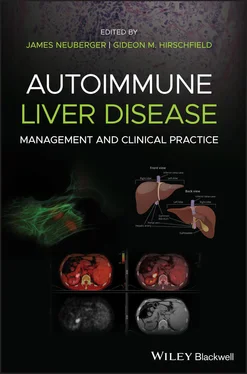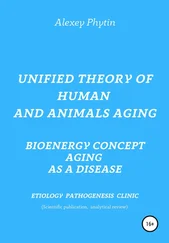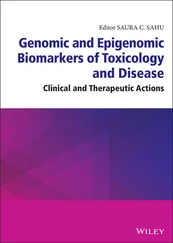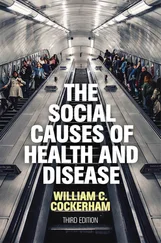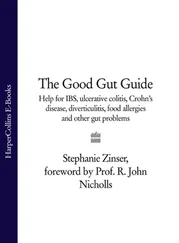The liver is largely composed of hepatocytes and biliary epithelial cells or cholangiocytes; both hepatocytes and intrahepatic cholangiocytes differentiate from bipotent liver progenitors, the hepatoblasts.
The liver has many functions, among which metabolic homeostasis, disposal of endotoxins and xenotoxins, metabolism of bilirubin and urea, and bile formation and secretion are just examples. The liver also produces fundamental circulating proteins and clotting factors and hormones. In addition, the liver receives and processes the blood coming from the intestine and has a fundamental role in innate immunity.
Besides their roles in dietary lipid absorption and cholesterol homeostasis, bile acids (BAs) also play a key role as signaling molecules in the regulation of hepatic metabolism and energy homeostasis.
BAs also have hormonal signaling functions and interact with dedicated receptors such as the nuclear receptor farnesoid X receptor and G protein‐coupled receptors, which regulate BA homeostasis and BA‐induced injury and/or inflammation.
Multiple niches of biliary tree stem/progenitor cells reside in different locations along the human biliary tree and within the liver parenchyma and have a key role in regeneration of the liver.
Cholangiocytes modify the primary bile by secretion of chloride and bicarbonate fluid. This is a major protective mechanism for the biliary tree.
Cholangiocytes, a barrier and secretory epithelium in normal conditions, activate and/or proliferate following a liver insult and give rise to the ductular reaction, a major driver of the progression of hepatic fibrosis.
Cholangiocytes also contribute to the immune response through antigen presentation to immune cells, being a target of immune‐mediated aggression or being the initiators of an inflammatory reaction that then progresses to adaptive immune activation.
Liver Cell Types and Organization
Liver cells can be classified into the following groups:
parenchymal cells, which include hepatocytes and biliary epithelial cells (BECs);
sinusoidal cells, which include hepatic sinusoidal endothelial cells and Kupffer cells; and
perisinusoidal cells, which include the hepatic stellate cells (HSCs) and the pit cells [1].
The hepatocytes , which comprise approximately 60% of the liver cell mass, are epithelial cells with two distinct domains on their plasma membrane: (i) the sinusoidal (or basolateral) surface, facing the sinusoids, in contact with plasma through the fenestrated endothelium of the sinusoids, which allows a bidirectional flow of liquids and solutes though the space of Disse; and (ii) the canalicular (or apical) surface, which encloses the bile ductules and represents the beginning of the biliary drainage system.
The BECs (or cholangiocytes) are the epithelial cells lining the biliary tree. The biliary epithelium shows a morphologic heterogeneity that is associated with a variety of functions performed at the different levels of the biliary tree. Other than funneling bile into the intestine, BECs are actively involved in bile production by performing both absorptive and secretory functions via various membrane transport mechanisms including channels (e.g. water channels and chloride channels), transporters (e.g. ileal BA transporter), and exchangers (e.g. Cl −/HCO3 −or Na +/H +exchangers). The large cholangiocytes are located at the level of interlobular and major bile ducts and they express several different ion channels and transporters at the basolateral or apical domain; they are believed to be mostly involved in secretin/cyclic AMP‐regulated bile secretion. Smaller bile duct branches include terminal cholangioles and ductules or canals of Hering; the latter is a channel located at the ductular–hepatocellular junction, lined partly by hepatocytes and partly by cholangiocytes, and represents the physiologic link between the biliary tree and the hepatocyte canalicular system extended within the lobule. Their secretory function is believed to be mostly regulated by intracellular calcium. More recently, other important biological properties restricted to cholangiocytes lining the smaller bile ducts have been reported, especially with regard to their plasticity (the ability to undergo limited phenotypic changes), reactivity (the ability to participate in the inflammatory reaction to liver damage), and ability to behave as liver progenitor cells.
The hepatic sinusoidal endothelial cells ( HSEC s ) represent 20% of the total liver cells. Unlike capillary endothelial cells, HSECs do not form intracellular junctions and simply overlap one another. They can secrete prostaglandins and cytokines [2]. They are also responsible for maintaining a cell niche that favors the quiescence of HSCs.
The Kupffer cells are specialized tissue macrophages and account for up to 90% of the total population of fixed macrophages in the body. These are macrophages attached to the endothelial lining of the sinusoid, in greater numbers in the periportal areas. They are responsible for removing old and damaged blood cells or cellular debris, bacteria, viruses, parasites, and tumor cells.
The HSCs , also known as Ito cells or lipocytes, are mesenchymal cells and represent the major storage site of retinoids in healthy livers. They lie within the subendothelial space, and their long cytoplasmic extensions have close contact with parenchymal cells and sinusoids, where they may regulate blood flow and hence influence portal hypertension. HSC activation is the central event in hepatic fibrosis. During hepatocyte injury, HSCs proliferate, migrate to zone three of the acinus, change to a myofibroblast‐like phenotype, and produce collagen and laminin.
Finally, the pit cells represent the natural killer (NK) cells of the liver and are located within the sinusoids. Pit cells show spontaneous cytotoxicity against tumor‐ and virus‐infected hepatocytes.
The liver is the site of many metabolic pathways. It stores and makes available many nutrients as energy sources. In turns, the metabolic function of the liver is regulated by hormones secreted by the pancreas, adrenal gland, and thyroid.
Bilirubin Metabolism and Transport
Bilirubin is an end‐product of heme catabolism. Two enzymes are involved in bilirubin formation: the microsomal heme oxygenase converts heme to biliverdin and a cytosolic reductase subsequently reduces biliverdin to bilirubin.
The majority (up to 85%) of heme is derived from hemoglobin and only a small fraction from other heme‐containing proteins such as cytochrome P450, myoglobin and immature bone marrow cells. Bilirubin formed in the monocytic–macrophage cell system of liver, spleen and bone marrow and some of the bilirubin formed in the hepatocytes from hepatic heme are released into plasma where bilirubin is bound to albumin at high‐affinity binding sites. In normal conditions, only a minimal amount of bilirubin is unbound in plasma. An increase in free bilirubin would allow the pigment to enter tissues where it can have toxic effects; this is what is observed in neonates with defective conjugation and in Crigler–Najjar syndrome, when diffusion of unbound bilirubin into the brain can cause kernicterus.
In normal conditions, bilirubin is efficiently taken up by the liver whereas the albumin remains in plasma. In the liver, bilirubin is bound initially to glutathione‐ S ‐transferase, then glucuronidated and excreted into bile. Microsomal bilirubin uridine diphosphate glucuronosyltransferase (UGT) is the enzyme that converts unconjugated bilirubin to conjugated bilirubin monoglucuronide and diglucuronide. Biliary excretion of the glucuronide is mediated by the adenosine triphosphate (ATP)‐dependent multidrug resistance protein (MRP)‐2 and this is the rate‐limiting factor in the transport of bilirubin from plasma to bile. Bilirubin diglucuronide is not reabsorbed from the small intestine; in the colon it may be hydrolyzed by bacterial β‐glucuronidases, producing urobilinogens and urobilin, which are excreted in the stool or urine.
Читать дальше
